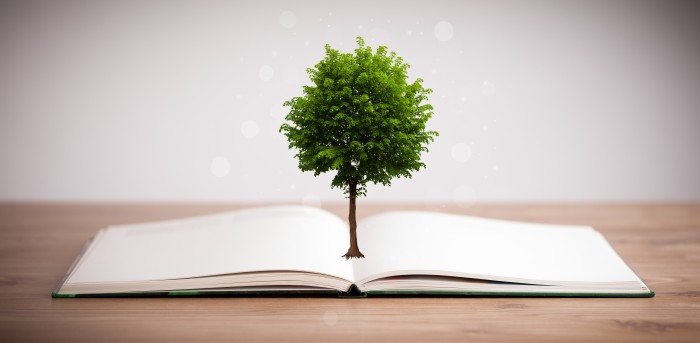
Have you ever opened a book to read and wondered how the paper it is printed on was made? Look around in your room right now and see how many things are made of paper: your textbooks, notebooks, a card you got for your birthday, and even the wallpaper on your walls are all paper products.
We use paper every day for so many things that we don’t even think about a world without it. We get a newspaper delivered that tells us what is going on in the world. Napkins, paper towels, and even toilet paper are essential to our everyday lives. In the classroom, we write on paper to work out math problems or do a book report. We rely on paper throughout our everyday lives.
According to many historians, paper was invented in China around 105 B.C. An official with the Imperial Court during the Han Dynasty used mulberry, fishnets, rags, and hemp waste to create a sheet of paper. Over time, the process evolved to use modern techniques developed in the 19th century in Europe with a machine that produced a continuous roll of paper instead of just individual sheets. This new process ended 2,000 years of making paper from rags. It was also the beginning of production for newsprint. Today’s paper is made mostly from two different products: pulpwood logs and recycled materials from paper.
Choosing the Right Kind of Tree to Make Paper
Different kinds of trees produce a different texture of paper. Soft woods like pine have longer fibers and give paper more strength. Hardwood fibers are shorter but tend to work better in printing and writing papers.
There are companies that go into places called “managed timberlands” to cut down trees to be used to make paper and other wood products. This process is called logging. There are different processes used, depending on the logging company and the wishes of the owner of the property being logged. Some logging is done as a clear cut, which means all trees are cut down in a certain area, clearing that area out. Other logging is done selectively, cutting just certain trees down. This process can be harmful to the trees left behind if it’s not done properly. Remaining trees can be damaged by the equipment or simply by the loss of a tree around it.
The Process of Making Paper
To make paper from trees, the raw wood has to be turned into pulp. This pulp is made up of wood fibers and chemicals that are mixed together. They can either be processed mechanically or chemically. With mechanical pulping, machines grind wood chips into pulp. The fibers are ground down more in this process, so the paper that is made is not as strong. This kind of paper is commonly used for newsprint and phone books.
The second, and more commonly used, method is chemical pulping. Chemical pulping creates stronger paper, since this method eliminates most of the natural glue-like substance in the pulp.
Pulp has a lot of liquid in it that must be removed in order to make the paper. The process is not much different from the process used by the ancient Chinese nearly 2,000 years ago. The pulp is sprayed onto large mesh screens. This creates a mat of pulp that then goes through several processes to have the water removed and is dried out to become paper. The wet paper is lifted from the mesh screen and then squeezed many different times through a series of presses to squeeze the water out. Once the paper has about 50 percent of its water removed, it is heated to dry to between 5 and 8 percent water content. At this point, the paper may go through treatments to create different textures. It is then wound into a reel. These reels of paper are so large that large cranes have to be used to move them.
Paper Made From Other Fibers
Most paper is made from wood pulp; however, there are other materials that can be used to make paper. Paper can be made from cotton, linen, grass, straw, sugar cane, or even from beets. The length of the fibers in the plant will determine the kind of paper that can be made from that particular fiber.
One thing we use every day, which is not made from paper but instead from cotton fibers, is the paper our money is printed on. Paper currency is made from a special blend of cotton and linen fibers. This blend makes it easier for people who work with money every day, like bank tellers, to tell if the money is real or fake. This blend also makes it harder for people to try to illegally print their own money. That process is called counterfeiting.
Making Paper At Home
With the right materials, you can make your own paper. This paper can be used for craft projects for special occasions like birthdays and holidays. Ask your mom or dad to help you gather the materials and create your own sheets of paper. You can even add in flower petals and different colors to create your own paper.
Conserving Our Resources
It can take many years to grow another tree to maturity to make more paper, so it is important that we conserve as much as we can by recycling paper and have engineers develop plans on how to log timberlands as efficiently as possible. Many of the paper products we use today are made with a large percentage of recycled paper.
Paper loses its glue-like substance every time it goes through the paper-making process, so when making paper, new wood pulp must be added in. That pulp can come from newly cut trees or from used paper, which is processed to recapture the pulp.
